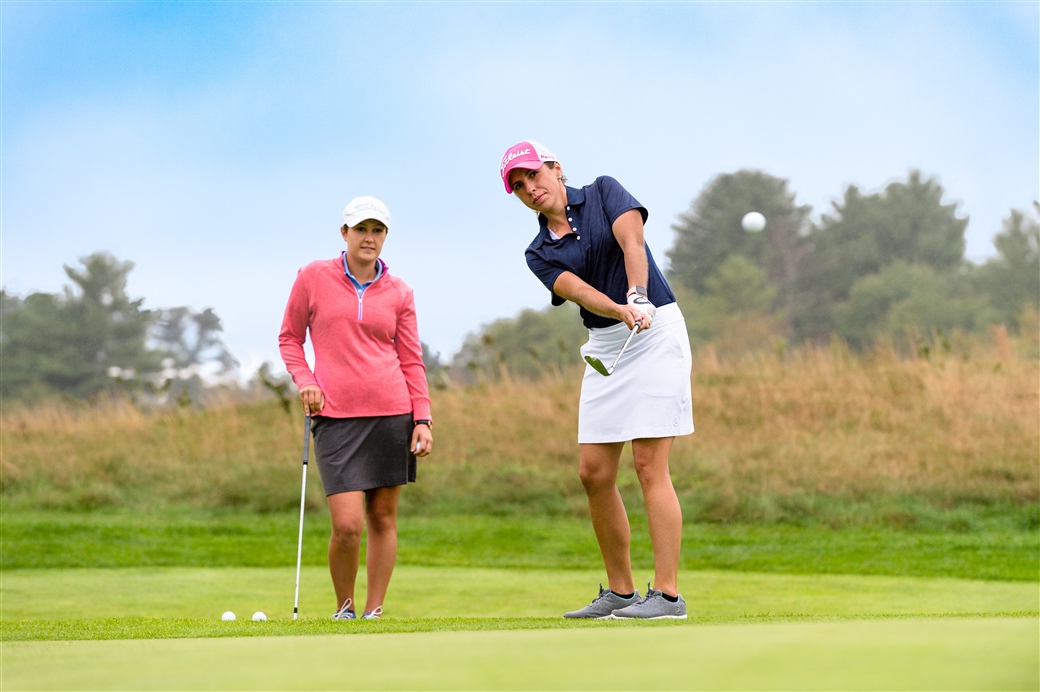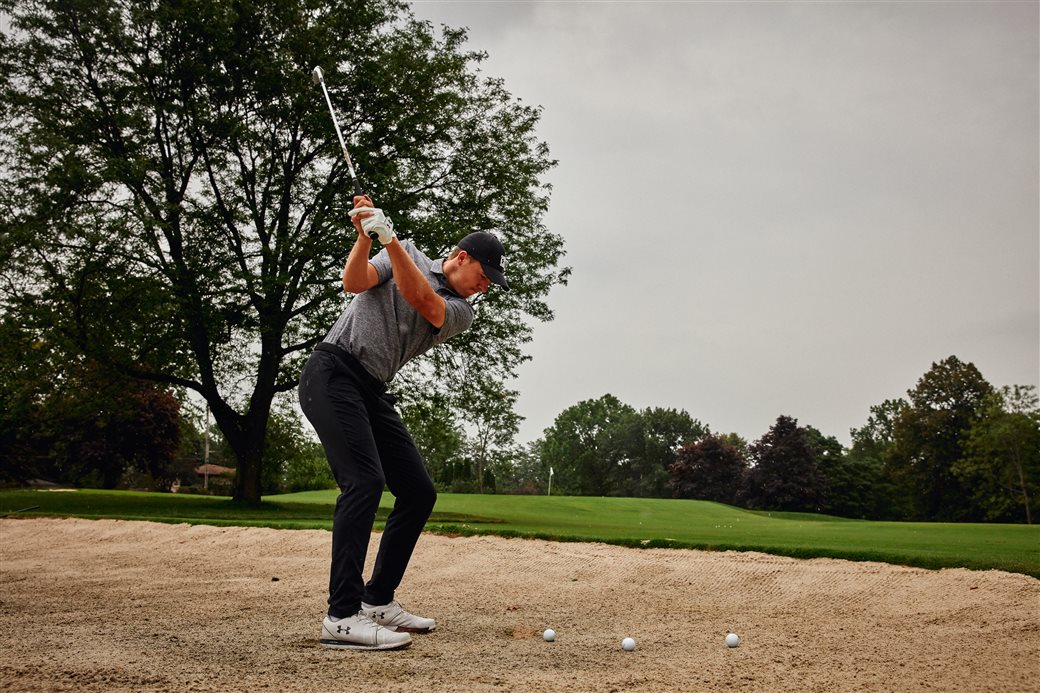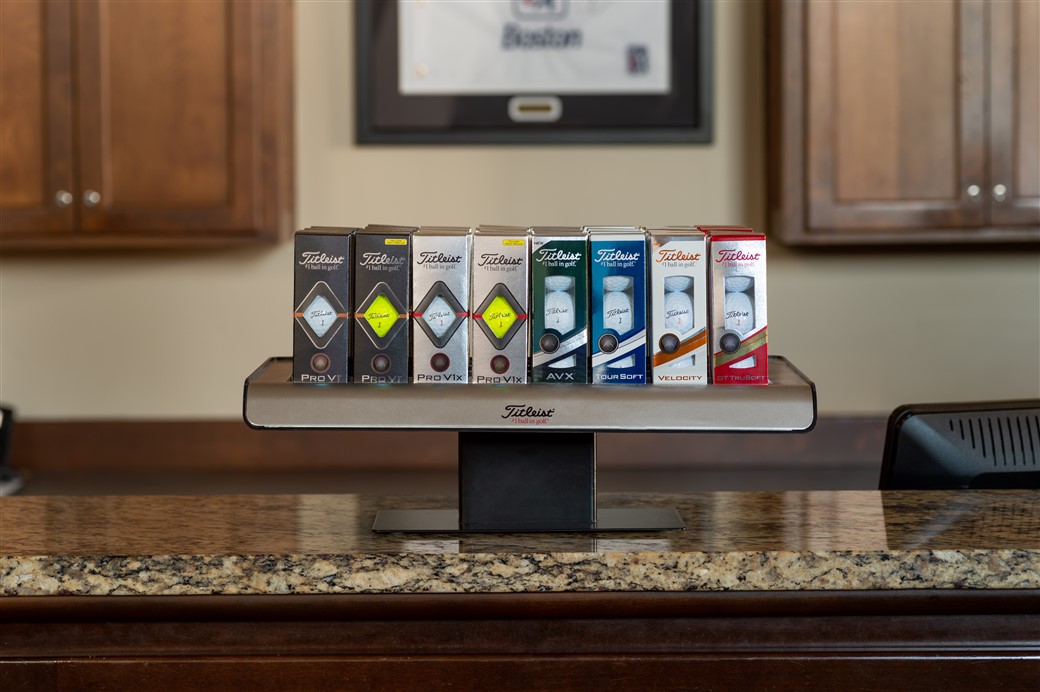
Whether you are a high-handicap amateur or a top-10 player in the world, consistently playing a properly fit ball can greatly enhance your ability to score. And wouldn’t you agree? The game is a lot more fun when you’re writing lots of low numbers down on your scorecard.
Between our golf ball fitting page, golf ball selector tool, and free fitting events worldwide, we’re constantly doing everything in our power to arm golfers with the proper resources to play the best ball possible. That being said, we also know some golfers aren’t easily able to attend fittings and/or have limited course accessibility. For that reason, we’ve reached out to some top Titleist PGA professionals and asked them to share their suggestions for at-home golf ball testing.

PGA PRO TIPS FOR GOLF BALL TESTING
CAMERON MCCORMICK
Cameron is one of the most highly respected swing coaches in the world with prominent students like Titleist Staffers, Jordan Spieth and So Yeon Ryu. He is the founder of Altus Performance in Dallas.
- Find multiple golf ball options to test based on your price point and suspected performance needs.
- On-course testing is a must since that is where we want the ball to perform. Hit multiple shots with your testing options from various locations. (Make sure you replace divots and ball marks.)
- The ball that feels the best and gives you enough stopping power on the green should be the one that wins out.
To learn more from Cameron, visit the Altus Performance website. Be sure to also check out his YouTube and Instagram channels and tune in to Cameron's Earn Your Edge podcast.

TRILLIUM ROSE
Trillium is the Director of Instruction at Woodmont Country Club in Rockville, Maryland. She is recognized as a Top 50 Teacher by the both Golf Digest and the LPGA and honored as the 2017 Middle Atlantic PGA "Teacher of the Year.” She has been designated a “Best Teacher in State” distinction in Golf Digest multiple times.
- So many people pick up whatever ball they find and toss it in their bag. It makes playing consistent golf more difficult as different balls perform quite differently from one another. Playing the same golf ball greatly improves performance and consistency.
- Higher-handicap players should play a ball that performs well around the green because they don't have the skills to get the ball to stop. Why not simply get a ball that will help you do that?
- Many players are misguided in that they think their clubhead speed with driver is the determining factor for what ball they should play. The problem is you only hit driver off the tee. The majority of a player’s shots are with much slower speeds and eventually on the green with very slow speeds. That’s where ball performance really matters.
For more instructional content, be sure to check out Trillium's Instagram page, follow her on Twitter and explore her website.
JAMES SIECKMANN
Recognized by Golf Magazine as a Top 100 Teacher in America and Golf Digest Top 50, James currently instructs a stable of eighteen PGA Tour, Web.com and LPGA Tour Players.
- I only fit the ball for wedge play. See how it feels when chipping first. The softness and spin that intuitively feels right for the player should be greatly considered. Then hit ½ and ¾ wedge shots looking for ideal launch and spin characteristics. Good players want a ball that they can keep down and flight through the wind with spin.
- I don’t think full shots need to be factored because the multitude of shaft and head combinations allow performance to be optimized on the back end once the ball is selected.
To raise your short game to the next level, visit https://jsegolfacademy.com/
JUSTIN PARSONS
Justin is a member of the Sea Island Instructional Staff who has worked with multiple PGA and European Tour players, including Louis Oosthuizen, Brian Harman, Harris English, Charl Schwartzel and Peter Uihlein
- I start by narrowing down potential options by considering the skill level, shot selection, spins characteristics and specific weaknesses within a player’s game.
- I monitor simple chips shots (feel, spin, release), pitch and bunker shots (trajectory, spin, and release), iron shots (trajectory, feel, control, spin, and distance) and woods (overall flight, spin, distance).
- Ideally, I test on-course as a player’s performance can change considerably from the range to the course. I’ve seen TOUR players experience up to a 10% gain in distance on course in comparison to the range.
For more great golf advice from Justin, visit the Performance Center section on the Sea Island Resort website and check out his Twitter and Instagram channels, too.

SKIP GUSS
The founder of GolfRite, Skip is a decorated pro with 32,000 lessons under his belt including work with LPGA, PGA Tour, U.S. Amateur Champions and Walker Cup Members.
- Nearly all top-of-line golf balls travel with a few yards of one another, thus distance is not the criteria for selecting a golf ball in my view. How the ball reacts and spins when it hits the green from an iron shot is important. How it performs around the green including sound and feel is the key to finding the right ball for your game.
- Take 3 different sleeves of testing options to a course or short game facility. (Try to schedule this at off-peak times, like twilight, when you have a better chance to work around some greens without groups breathing down your neck.) Select a shot, hit all 9 balls from the same spot and see which model performs and feels the best. Repeat the process with approach shots, chips, pitches, lobs, and bunker shots until a clear winner sticks out.
For more great content and to learn more about Skip's teaching, visit the GolfRite website.
TOM PATRI
A Golf Magazine Top 100 Teachers in America, Tom has been a leading voice in golf instruction for more than 30 years.
- What I believe you must do when contemplating a ball change is conduct side by side on-course testing. Conditions change, as does your swing. Hit many golf shots with every club in your bag over several days. Then and only then will you be able to make a sound decision.
- Try to test on the course you’re most familiar with. A track where you know how far you generally drive it and how your ball typically reacts on the greens.
- Choosing the right ball for your game is vital. Remember your golf ball is the only piece of equipment that is involved in every shot you’ll ever hit.
To learn more from Tom, visit his website at www.tompatri.com. Check him out on Instagram and Twitter, too.
LAYNE SAVOIE
Layne is the co-founder of WedgeCraft, a data collective that uses state-of-the-art technologies to study wedge play and the best wedge players in the world. A former professional player and NCAA coach, Layne now shares the findings of WedgeCraft and applies it to his advanced teaching of the short game.
- Look for a ball action on the green that mimics “check, check, give” when it lands from inside 30 yards. On contact with the green, the ball should visibly be bouncing up and checking twice, then followed by a short amount of forward release afterward. On longer wedge shots over 50 yards, the ball should only bounce once or twice, then spin hard (sometimes backward!). When you see these things, you have found your ball!
- As a short game teacher, I know that spin is the greatest weapon for scoring 100 yards and in. Using a premium ball like a Pro V1 opens an entirely new world of short game performance for golfers.
Visit the WedgeCraft website for more cutting edge insights on the short game. And for more great tips from Layne, be sure to also check out WedgeCraft on YouTube.
BEN BLALOCK
Ben is the Director of Instruction at North Ridge County Club in North Carolina holding certifications from the PGA, TPI, US Kids Golf, and Trackman.
- Don't ignore putting when ball testing. You should look for a ball that delivers a comfortable “sound” and “feel” that you’ll be experiencing on each hole. After all, we use the putter more than any other club in the bag.
- Keep a pocket-sized notebook and a pencil to track results throughout your testing process. This is a human test, not a robot test – and it’s you that will be playing the ball, so you need to know how you do with each ball.
- A crowded golf course is no time to test golf balls. So, rather than hold up play while you hit 2 shots at every tee or 2 approaches into every green, get out on the course late one afternoon, or early one morning.
For more great instruction from Ben, check him out on YouTube, as well as his Instagram and Facebook channels.
BRANDON STOOKSBURY
Brandon currently serves as the Director of Instruction at the Idle Hour Golf Learning Center in Macon, Ga. He specializes in competitive player development with focus in the areas of short-game and putting and his students compete at every level from junior golf all the way through national level USGA events and the professional tours.
- I'm a short game coach, so my philosophy on ball fitting will always start at, and around, the green. The feel of the ball off the putter face and the spin off a wedge is a hugely important part of the process..
- I always start with a wedge hitting medium-length chip shots looking at how much "check" the ball is providing when it hits the green. I'll then move back to a short pitch shot followed by 50 yard distance wedge. I'll have them hit different balls until they find the model that gives them the performance they want. Some people want a high spinning ball while others want to see it release a little.
- When my students go out and test balls on the golf course, I prefer they hit as many different shots as they can in pairs, alternating models with each shot. It's really important to compare the different models side by side, one ball right after the other. getting that immediate feedback is the best way to identify differences in feel, flight and spin. It's difficult to double up on every shot you play during a round, but if you pick your spots, you can get a pretty good sample size without holding up play too badly.
For more wedge and putting advice from Brandon, visit his website and check out his YouTube, Twitter and Instagram channels, too.
#TeamTitleist